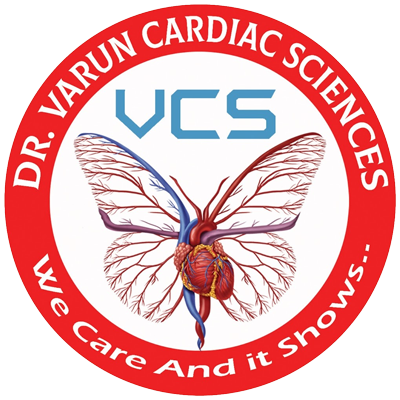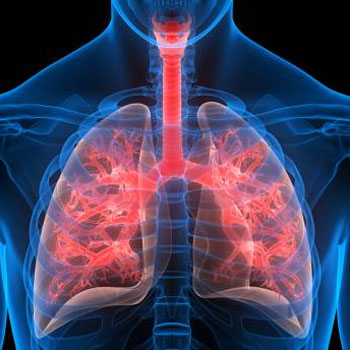Pulmonology is a medical specialty that focuses on the health of the respiratory system, which includes the lungs and other organs involved in breathing. Pulmonologists are doctors who diagnose and treat conditions affecting the respiratory system. Given the vital role of breathing in sustaining life, pulmonology is a crucial field within medicine, addressing a wide range of diseases from asthma and chronic obstructive pulmonary disease (COPD) to lung cancer and sleep disorders. This article provides a comprehensive overview of pulmonology, its scope, and its significance in healthcare.
The Respiratory System: An Overview
Before diving into pulmonology, it’s essential to understand the respiratory system. The primary function of the respiratory system is to facilitate the exchange of gases—oxygen and carbon dioxide between the body and the environment. The major components of the respiratory system include
- Nose and Nasal Cavity: The entry point for air, where it is warmed, humidified, and filtered
- Pharynx and Larynx: Pathways that direct air into the lungs and house the vocal cords
- Trachea (Windpipe): A tube that transports air to the bronchi
- Bronchi and Bronchioles: Airways that branch off from the trachea into each lung, further subdividing into smaller passages
- Lungs: Paired organs containing alveoli, where gas exchange occurs
- Alveoli: Tiny air sacs within the lungs where oxygen enters the blood, and carbon dioxide is removed.
What is Pulmonology?
Pulmonology is the branch of medicine that deals with diseases and disorders of the respiratory system. Pulmonologists, or respiratory physicians, are specialists who manage patients with conditions such as asthma, COPD, pneumonia, tuberculosis, and lung cancer. They also address issues like pulmonary hypertension, cystic fibrosis, and sleep apnea.
What are the Key Areas of Pulmonology?
Asthma
Asthma is a chronic inflammatory disease of the airways characterized by episodes of wheezing, breathlessness, chest tightness, and coughing. It is often triggered by allergens, exercise, cold air, or stress. Pulmonologists manage asthma through medications such as inhalers, lifestyle changes, and avoidance of triggers.
Chronic Obstructive Pulmonary Disease (COPD)
COPD is a group of progressive lung diseases, including emphysema and chronic bronchitis, which cause airflow obstruction and breathing difficulties. Smoking is the primary cause of COPD. Pulmonologists treat COPD with bronchodilators, steroids, oxygen therapy, and lifestyle modifications like smoking cessation.
Lung Infections
Lung infections, such as pneumonia and tuberculosis, can cause severe illness and complications if not properly treated. Pulmonologists diagnose these infections through chest X-rays, CT scans, and sputum tests, and they manage treatment with antibiotics, antivirals, and supportive care.
Lung Cancer
Lung cancer is one of the most common and deadly forms of cancer worldwide. It can originate in any part of the lungs or bronchi. Pulmonologists play a crucial role in the early detection, diagnosis, and management of lung cancer through techniques like bronchoscopy, biopsy, and collaboration with oncologists for chemotherapy, radiation, and surgical treatments.
Pulmonary Hypertension
Pulmonary hypertension is high blood pressure in the arteries of the lungs, which can lead to heart failure. Pulmonologists manage this condition with medications that relax blood vessels, improve heart function, and sometimes, lung transplantation.
Sleep Disorders
Sleep disorders like obstructive sleep apnea (OSA) are also within the scope of pulmonology. OSA involves repeated interruptions in breathing during sleep due to airway collapse. Pulmonologists diagnose OSA with sleep studies and manage it with continuous positive airway pressure (CPAP) therapy, oral appliances, and sometimes surgery.
What are the Diagnostic Tools in Pulmonology
Pulmonologists utilize a variety of diagnostic tools to assess respiratory health and diagnose conditions
Spirometry
Measures lung function, particularly the volume and speed of air that can be inhaled and exhaled.
Chest X-rays
Provide images of the lungs and chest structures to identify abnormalities.
CT Scans
Offer detailed cross-sectional images of the lungs and chest, helping in the diagnosis of conditions like lung cancer.
Bronchoscopy
Involves inserting a flexible tube with a camera into the airways to visualize the bronchial tubes and obtain tissue samples.
Pulmonary Function Tests
Assess various aspects of lung function, including lung volume, capacity, and gas exchange.
Blood Gas Analysis
Measures the levels of oxygen and carbon dioxide in the blood to evaluate respiratory function.
What are the Treatment Modalities in Pulmonology?
Pulmonologists employ a range of treatments depending on the specific condition
Medications
Include bronchodilators, corticosteroids, antibiotics, antifungals, antivirals, and pulmonary vasodilators.
Oxygen Therapy
Provides supplemental oxygen to patients with chronic lung diseases or respiratory failure.
Mechanical Ventilation
Supports or replaces spontaneous breathing in critically ill patients.
Surgical Interventions
Such as lung resection, transplantation, and removal of lung nodules or masses.
Pulmonary Rehabilitation
A comprehensive program that includes exercise training, nutritional advice, and education to improve the quality of life for patients with chronic respiratory diseases.
The Role of Pulmonologists in Healthcare
Pulmonologists work in various settings, including hospitals, outpatient clinics, and specialized care centers. They often collaborate with other healthcare professionals, such as thoracic surgeons, radiologists, oncologists, and primary care physicians, to provide comprehensive care for patients with respiratory conditions.
Preventive Care and Pulmonology
Preventive care is a significant aspect of pulmonology, aimed at reducing the incidence and impact of respiratory diseases. This includes
- Smoking Cessation Programs: To prevent COPD, lung cancer, and other smoking-related diseases.
- Vaccinations: Such as the flu vaccine and pneumococcal vaccine to prevent respiratory infections.
- Environmental Controls: Reducing exposure to allergens, pollutants, and occupational hazards.
- Education and Awareness: Informing the public about the importance of lung health and early detection of respiratory conditions.
Research and Advancements in Pulmonology
Pulmonology is a dynamic field with ongoing research and advancements aimed at improving patient outcomes. Recent developments include
Precision Medicine
Tailoring treatments based on the genetic makeup of individuals, particularly in the context of lung cancer.
Advanced Imaging Techniques
Enhanced imaging technologies for better diagnosis and monitoring of lung diseases.
Biologics and Targeted Therapies
New medications that target specific pathways involved in asthma, COPD, and other inflammatory lung diseases.
Minimally Invasive Procedures
Techniques like endobronchial ultrasound (EBUS) and robotic-assisted thoracic surgery that reduce recovery times and improve precision.
Telemedicine
Expanding access to pulmonology care through remote consultations and monitoring, especially in underserved areas.
Pulmonology is a vital medical specialty dedicated to the health of the respiratory system. Pulmonologists play a crucial role in diagnosing, treating, and managing a wide range of respiratory conditions, from common diseases like asthma and COPD to complex conditions like lung cancer and pulmonary hypertension. Through preventive care, advanced diagnostics, and innovative treatments, pulmonologists strive to improve the quality of life for patients with respiratory diseases. Ongoing research and technological advancements continue to enhance the field, offering hope for better management and outcomes for patients worldwide.

